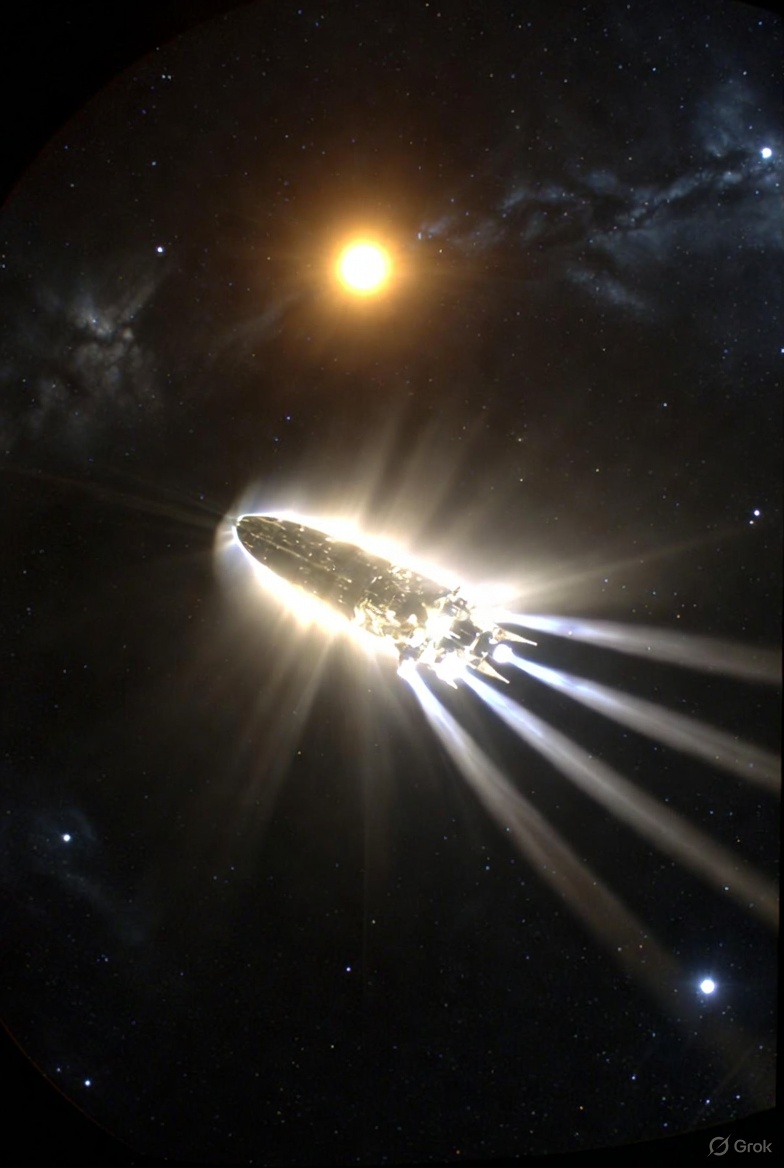Interstellar Comet 3I/ATLAS: The “Glowing Alien Ship” BuzzIn early November 2025, an interstellar comet designated 3I/ATLAS made its closest approach to the Sun, sparking widespread speculation online and in media about it being a “glowing alien ship” due to its unusual brightness and trajectory. This object, the third confirmed interstellar visitor to our solar system (after 1I/ʻOumuamua in 2017 and 2I/Borisov in 2019), originated from outside our solar system and is now slingshotting back into deep space. Here’s a breakdown of the facts, the hype, and what’s next.Key Facts About 3I/ATLAS
- Discovery and Path: Spotted in July 2025 by NASA’s ATLAS (Asteroid Terrestrial-impact Last Alert System) telescope in Chile, it was initially about 410 million miles (670 million km) from the Sun—roughly within Jupiter’s orbit. It’s on a hyperbolic trajectory, meaning it’s not bound to our Sun’s gravity and is just passing through.
- Perihelion (Closest to Sun): On November 1, 2025, it reached its perihelion at about 0.25 AU (astronomical units, or ~23 million miles/37 million km from the Sun), where it rapidly brightened, glowing intensely as icy materials vaporized into a coma (gaseous envelope). NASA’s SOHO (Solar and Heliospheric Observatory) spacecraft captured this, showing a sudden surge in brightness behind the Sun.
- Appearance: From Earth-based telescopes like Hubble, it appears elongated and cigar-shaped, with a “glowing halo” from its coma and reported “jets” of material (likely seven distinct outbursts) as it heated up. This has fueled the alien ship narrative, reminiscent of ʻOumuamua’s odd shape and non-gravitational acceleration.
- Speed and Destination: Traveling at ~27 km/s (60,000 mph), it’s heading toward the constellation Pegasus after its solar flyby. No collision risk to Earth—its closest approach to us was in September 2025 at ~1.4 AU.
The Alien SpeculationUFO enthusiasts and some astronomers (like Harvard’s Avi Loeb, who speculated on ʻOumuamua) have hyped 3I/ATLAS as a potential extraterrestrial probe. Claims include:
- It “releases seven jets with a glowing halo” as it nears the Sun, interpreted as artificial propulsion.
- Its rapid brightening and interstellar origin suggest non-natural origins.
However, NASA and most experts classify it firmly as a comet: the jets are outgassing from sublimating ices, and the shape is just how some interstellar rocks form. No evidence of artificial signals or tech has been detected. Marshall Eubanks of Space Initiatives Inc. even proposed flyby missions with existing spacecraft (like New Horizons) for closer study, calling it a “once-in-a-lifetime” chance—but that’s for science, not sci-fi.Viewing and Future Observations
- Visibility: It’s now fading as it exits the inner solar system but remains observable with telescopes until mid-2026. Amateur astronomers can track it via apps like Stellarium or NASA’s Eyes on Asteroids.
- Missions?: No dedicated probe is en route, but data from SOHO, Hubble, and ground telescopes continues to pour in. If it’s truly alien tech, we’d need SETI-level scans—none have pinged anything yet.
This event highlights how real astronomy often blurs into pop culture (think Rendezvous with Rama vibes). If you’re spotting this from Germany (clear skies permitting), it’s a reminder of our cosmic neighborhood’s wild visitors. Got telescope coords or want to dive into the raw NASA data? Let me know!





